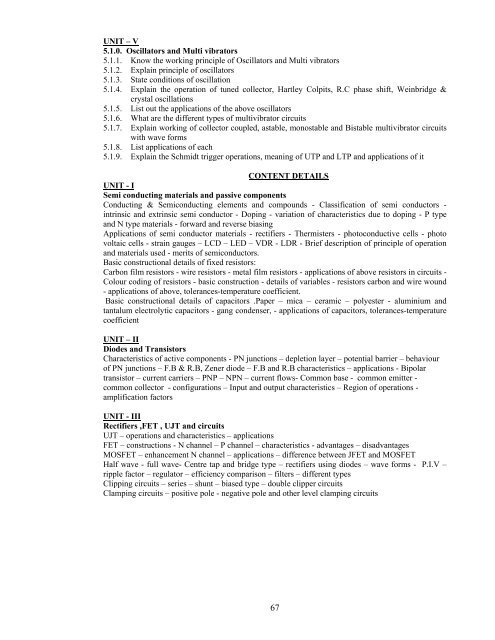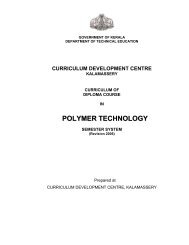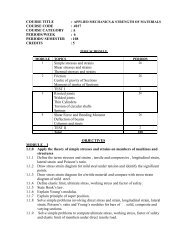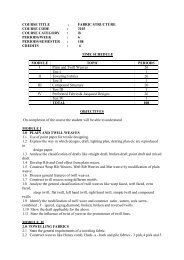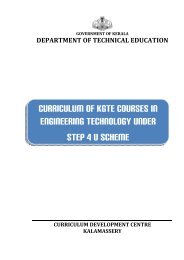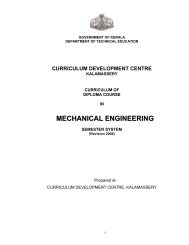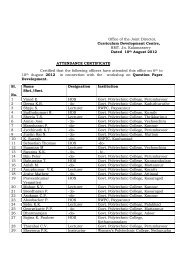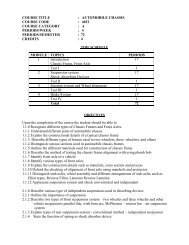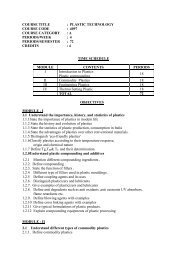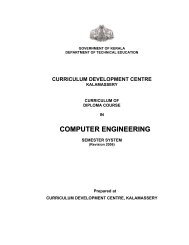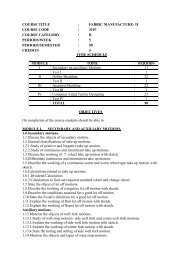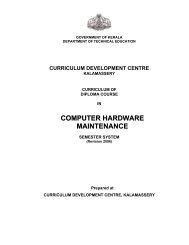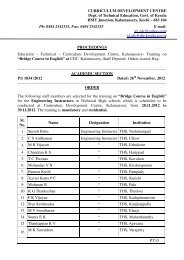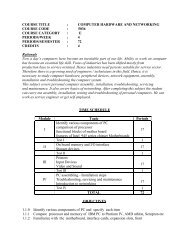13 - Curriculum Development Centre, Kalamassery
13 - Curriculum Development Centre, Kalamassery
13 - Curriculum Development Centre, Kalamassery
- No tags were found...
Create successful ePaper yourself
Turn your PDF publications into a flip-book with our unique Google optimized e-Paper software.
UNIT – V5.1.0. Oscillators and Multi vibrators5.1.1. Know the working principle of Oscillators and Multi vibrators5.1.2. Explain principle of oscillators5.1.3. State conditions of oscillation5.1.4. Explain the operation of tuned collector, Hartley Colpits, R.C phase shift, Weinbridge &crystal oscillations5.1.5. List out the applications of the above oscillators5.1.6. What are the different types of multivibrator circuits5.1.7. Explain working of collector coupled, astable, monostable and Bistable multivibrator circuitswith wave forms5.1.8. List applications of each5.1.9. Explain the Schmidt trigger operations, meaning of UTP and LTP and applications of itCONTENT DETAILSUNIT - ISemi conducting materials and passive componentsConducting & Semiconducting elements and compounds - Classification of semi conductors -intrinsic and extrinsic semi conductor - Doping - variation of characteristics due to doping - P typeand N type materials - forward and reverse biasingApplications of semi conductor materials - rectifiers - Thermisters - photoconductive cells - photovoltaic cells - strain gauges – LCD – LED – VDR - LDR - Brief description of principle of operationand materials used - merits of semiconductors.Basic constructional details of fixed resistors:Carbon film resistors - wire resistors - metal film resistors - applications of above resistors in circuits -Colour coding of resistors - basic construction - details of variables - resistors carbon and wire wound- applications of above, tolerances-temperature coefficient.Basic constructional details of capacitors .Paper – mica – ceramic – polyester - aluminium andtantalum electrolytic capacitors - gang condenser, - applications of capacitors, tolerances-temperaturecoefficientUNIT – IIDiodes and TransistorsCharacteristics of active components - PN junctions – depletion layer – potential barrier – behaviourof PN junctions – F.B & R.B, Zener diode – F.B and R.B characteristics – applications - Bipolartransistor – current carriers – PNP – NPN – current flows- Common base - common emitter -common collector - configurations – Input and output characteristics – Region of operations -amplification factorsUNIT - IIIRectifiers ,FET , UJT and circuitsUJT – operations and characteristics – applicationsFET – constructions - N channel – P channel – characteristics - advantages – disadvantagesMOSFET – enhancement N channel – applications – difference between JFET and MOSFETHalf wave - full wave- <strong>Centre</strong> tap and bridge type – rectifiers using diodes – wave forms - P.I.V –ripple factor – regulator – efficiency comparison – filters – different typesClipping circuits – series – shunt – biased type – double clipper circuitsClamping circuits – positive pole - negative pole and other level clamping circuits67


